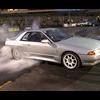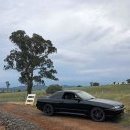What Is The Typical Knock Reading For Rb With The Vipec Ecu?
Announcements
-
Similar Content
-
Latest Posts
-
Man, I hope this one gets finished i just randomly remembered it the other day and thought I’d check in.
-
Started sifting thru my brakes to decide which ones I will run on Clem Made me think I should just put them all on Silver...for when brake fade just isn't an option Should be able to bump rotor up from 343x32 to 348x36 off Supra. Not sure if the Supra annulus is right for the Alcons or APs but trying g to find a used Supra\M4 rotor to test fit The Alcons seem to gain 1-2mm clearance which all helps
-
So car is getting a few mods to the cage and some jacking points welded in Meantime Ol Silver gets a new gearbox and shiny clutch. Old Box is being set aside for Clem
-
By joshuaho96 · Posted
Probably speedometer itself if the odometer is ticking. If the needle is stuck from a bit of grease or something that can cause it to stay at 0. Or a cracked solder joint in the speedometer can do it too. -
Thanks Fella’s to take this off topic and to elaborate a bit more. I have an rb25/30 going into a r32 GTST.. expected to make around 600-700hp. Would you? A) R34 GTT box B) CD00#? I’ve seen a few posts about the CD swap and sounds fairly involved with making it fit etc but if it’s worth the work then I’ll go that way
-




Recommended Posts
Create an account or sign in to comment
You need to be a member in order to leave a comment
Create an account
Sign up for a new account in our community. It's easy!
Register a new accountSign in
Already have an account? Sign in here.
Sign In Now